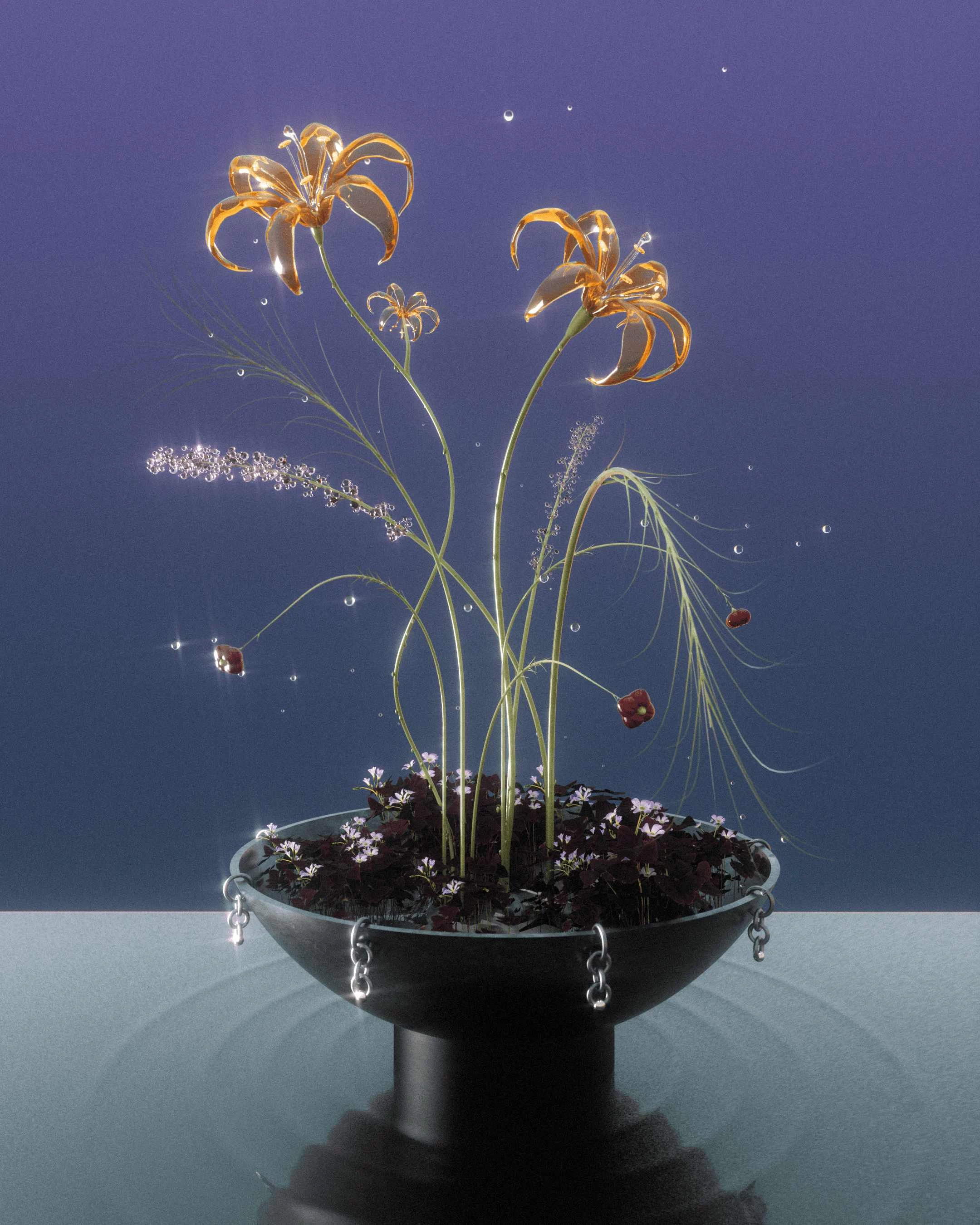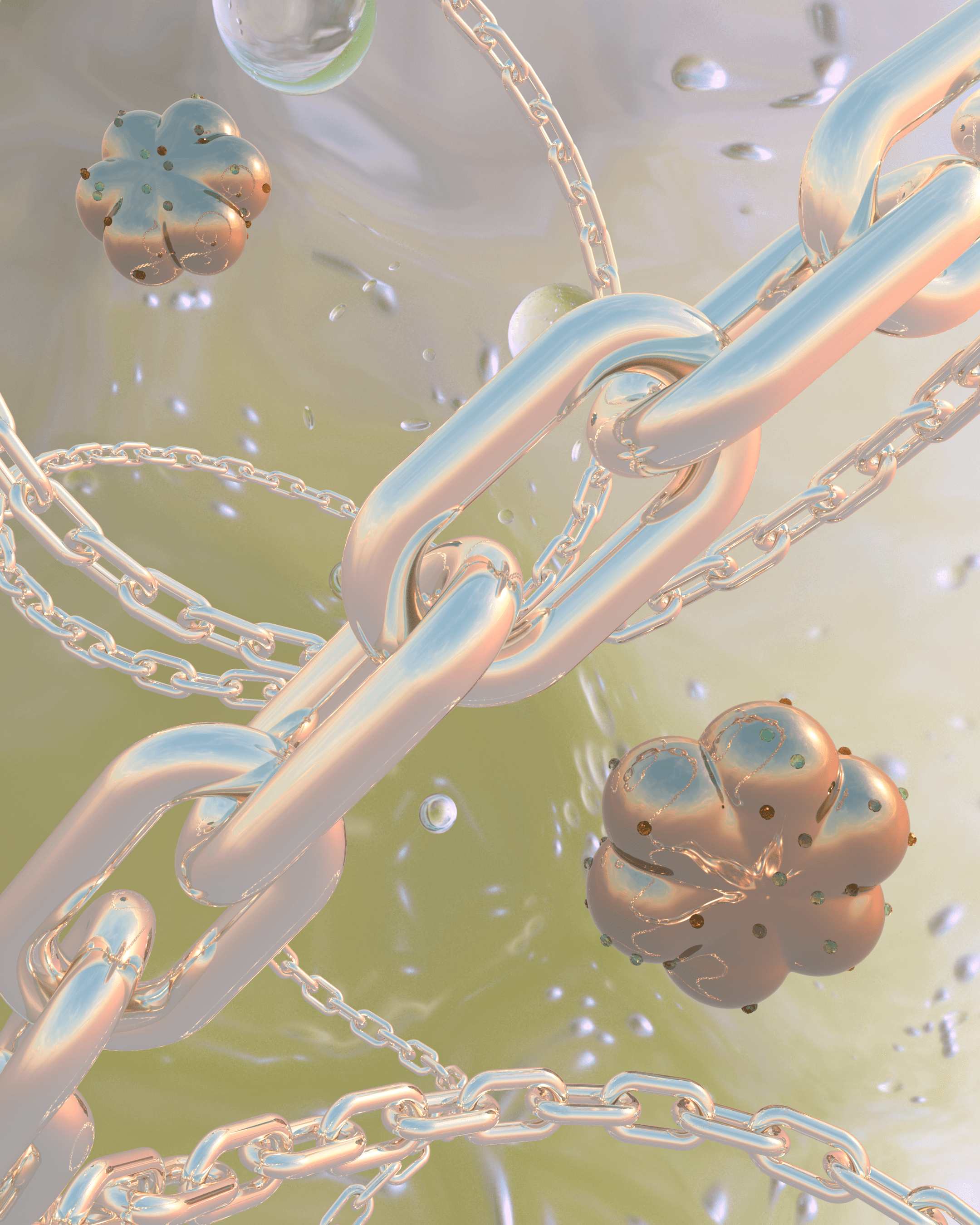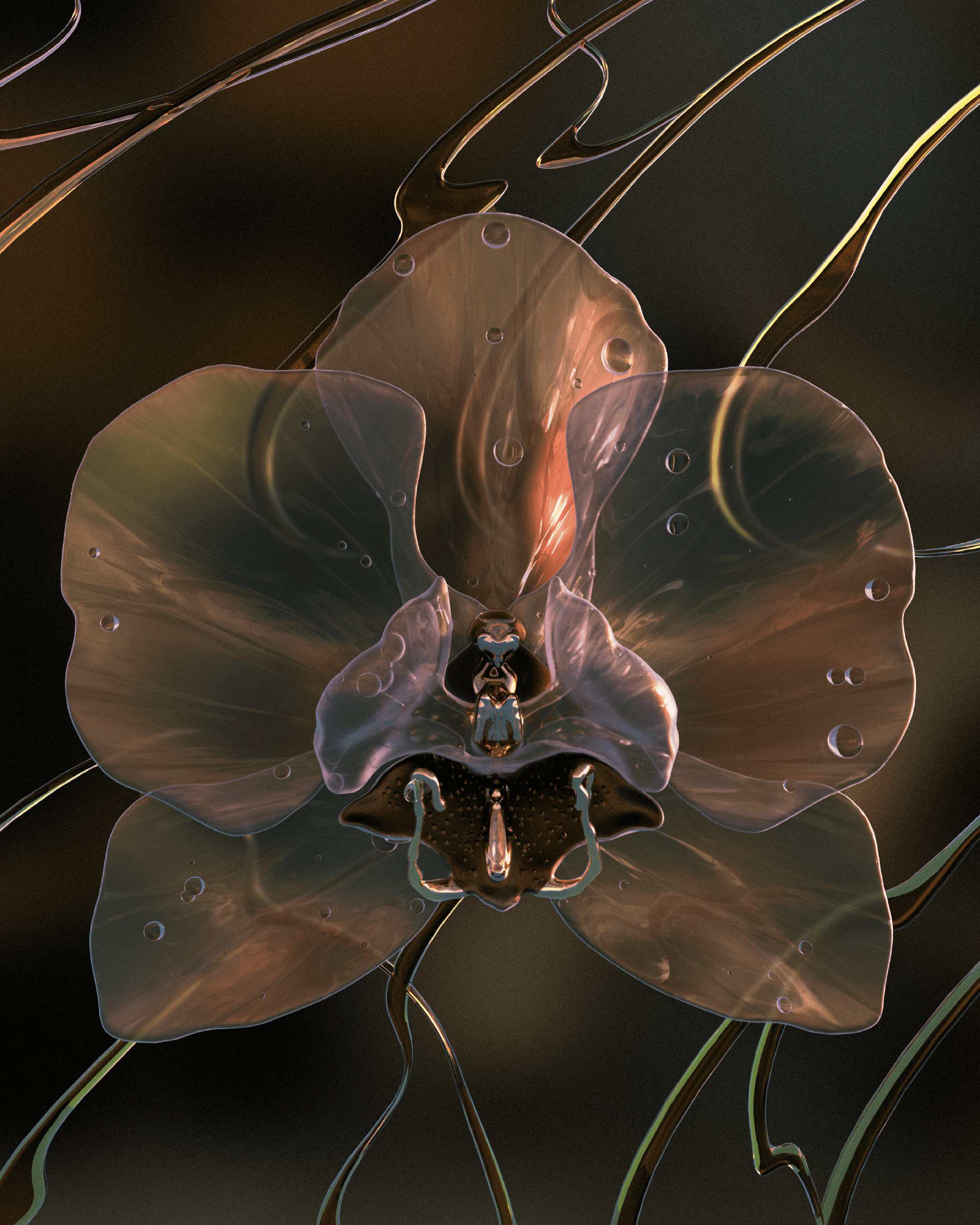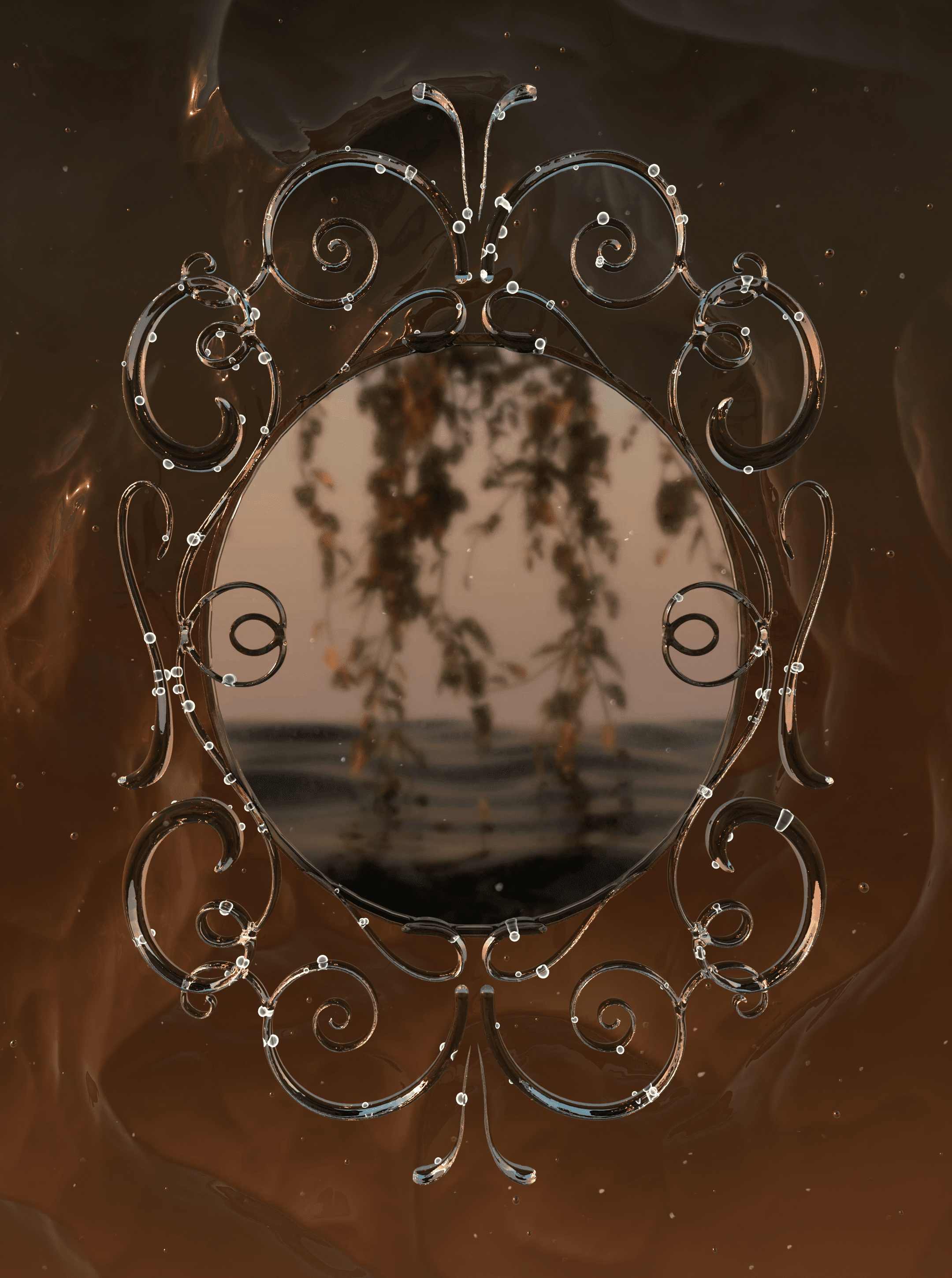
- Date
- 11 DECEMBER 2023
- Author
- AMBER WEIR
- Image by
- MICHELLE KUAN
- Categories
- Monday Spotlight
Dreamlike Realms Unveiled: Exploring Otherworldly Landscapes with Michelle Kuan
Imagine life in a new world. On this planet, time moves slowly and there is an abundance of peace, time, and harmony, where flowers glisten and butterflies glow. Humans might never get to see this place in the physical world, but Michelle Kuan’s 3D designs give us a glimpse into what an alternative future could look like. As a chronically ill designer, Michelle’s designs have become a path for her mind to wander freely and imagine fantastical dreamscapes. Inspired by disability aesthetics, somatic memory, and the relationship between technology and the natural world, Michelle's designs are a speculative tool, imagining softer worlds and different futures.

Can you tell us about your journey as a designer and how you became involved in 3D design?
My path to 3D design was a somewhat unconventional one. I spent several years before becoming a designer studying developmental biology, where I researched mechanisms that control how cells organize into tissues and organs. After realizing that I didn’t want to pursue biology further, I went back to school to study graphic design. It was there that I first encountered the modeling and animation software Cinema 4D and began to develop an interest in 3D design. Following my studies, I worked as a graphic designer and strategist at a multidisciplinary design studio, where I had the opportunity to craft visual identities for brands including ASICS, lululemon, and Onitsuka Tiger.
In 2020, I decided to expand my artistic practice by going freelance and taking a short sabbatical to experiment with new visual mediums. This included taking part in a residency with SOFTER under the mentorship of Ida Lissner, Nicole Jonasson, and Carla Cammilla Hjort, which rekindled my fascination with 3D design. Over the past few years, I’ve continued to explore the expansive world-building capabilities of the medium through illustration commissions, self-directed projects, and most recently, 3D printed resin and PLA sculpture.
Your designs are a beautiful dreamscape and unworldly. Where do you look for inspiration and how are these references transformed into your design process?
My design process tends to be very research-driven, focusing on compiling material and lighting references that I can use to construct immersive, sensorial worlds. Once I’ve completed my research, I work intuitively—sculpting, composing, and manipulating materials and lighting until each illustration or animation tells a cohesive story.
I gather inspiration from many sources depending on the project, but I am particularly inspired by imagery and writings about unusual flora, ritual objects, disability aesthetics, and the notion of somatic memory. Recently, I’ve been collecting images captured by scanning electron microscopes, which can magnify objects more than a million times—revealing a hidden world of shapes and textures that are invisible to the naked eye.
There is a dreamy, soft, and delicate nature to your work. How would you describe your design style, and is there a philosophy behind your work?
My designs are very informed by my lived experiences as a chronically ill artist. In many ways, I consider 3D software to be a portal that allows me to build fantastical dreamscapes where my mind can freely roam when my body physically cannot. In this vein, much of my work is lit to simulate twilight—the liminal window of time where two states of existence meet. Similarly, the materials I most frequently use—like glass—have innately fragile attributes but are imbued with strength when molded into sinewy, organic forms.

Thank you for sharing your lived experience. In these fantastical dreamscapes, there is a theme of harmony and peace. Is this an intentional design element and what are your thoughts about the relationship between technology and nature?
A lot of work in the 3D space—including my own, explores digital flora and abundant, lush landscapes. I think this shared interest speaks to our innate instincts as humans to connect with nature, especially in this moment in time when natural environments are rapidly disappearing—in part due to digital technologies and the resources required to create and maintain them.
Despite its alienating and destructive aspects, I do see technology as a tool for accessibility that can allow individuals to enjoy some of the restorative qualities of nature when true natural environments are inaccessible to them. These uncanny digital representations can also provoke viewers to more carefully consider their relationships with the natural world.
Could you share with us, what your ideal world looks like and your thoughts about the future of 3D design?
My ideal visual world is an expansive refuge where time moves slowly, in non-linear ways. Forgotten emotions and memories drift across the landscape like waves, waiting to one day be received. It is an endless world that is at once familiar and awe-inspiring, providing the space to dream and play with alternative forms of embodiment.
As for the future of 3D design, I believe that it will be increasingly used as a speculative tool to reimagine cultural and ecological futures.
What are your next steps as a designer and have you got any upcoming projects we should keep an eye out for?
I am currently in Nancy, France, installing an exhibition with my collaborators Emi Takahashi and Hinako Omori. This exhibition brings to life a selection of Japanese onomatopoeic expressions that describe the ever-shifting character of the wind and is my first foray into translating my digital 3D work into physical sculptures.
I’m also working on a new project using gaming software to explore crip time and radical care. I am excited by the holistic storytelling potential of the medium and am looking forward to developing this project in the coming months.

Interview by @weir.amber
Images courtesy of @michelllekuan